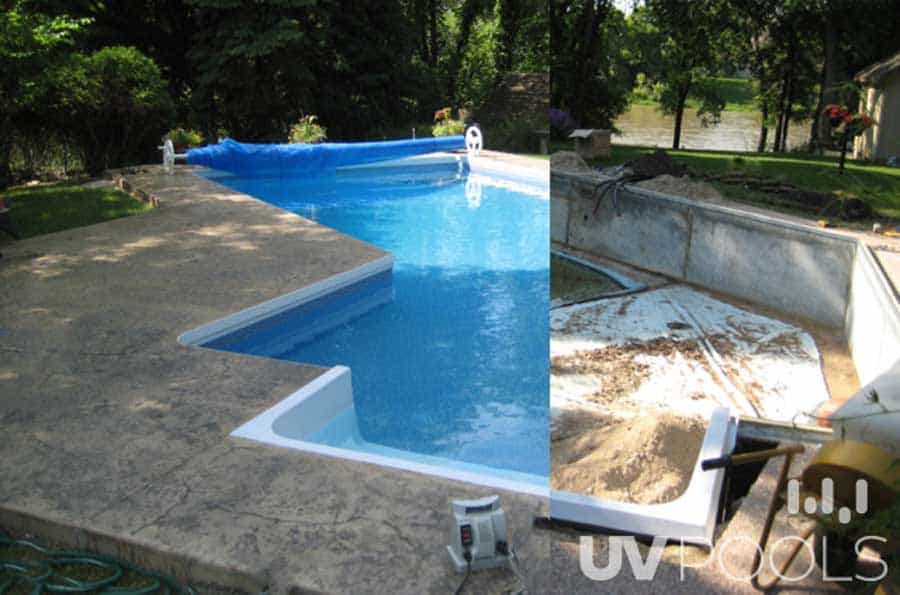Here we list some pool liner repair tips:
Pool Liner Coming out of the Track?
Aboveground Liners and Inground Liners are supposed to fit snugly into the shape of your pool. If your liner was slightly installed off center, or if the pool liner is too small or too large for the shape of your pool, you might see the bead popping out of its track.
Using a hair dryer or heat gun and a ton of elbow grease, the liner may be stretched then locked back inside its track. Extremely hot water will work well as you have to stretch a liner. If it’s an ongoing issue, using a Liner Lock will help to keep the bead inside the track. Do not overstretch or melt the liner. Exercise care utilizing electrical equipment around the water then plug inside a GFCI outlet.
It usually is lots of pushing and pulling to get a liner back inside the track. Within some instances, you will have to lower the level of water one or more feet if a long stretch of the liner popped out. In addition, if the water is extremely cool, lowering the level might be needed to build up sufficient heat.
Using a small hair dryer may heat the liner up and make it more stretchable, and simpler to get back inside the track. Be careful though, just keep the dryer moving, but not too close to the vinyl! As the liner is placed back inside the track, think about the use of a Liner Lock, to assist in holding it inside the track.
Fading Pool Liner?
High levels of chlorine and heavy shocking, or consistently low Alkalinity and pH must be avoided. It’ll remove the plasticizers and resins, giving liners their resiliency, and leads to brittle vinyl, leading to new liners. Clean your waterline only if necessary, and only use a mild pool cleaner – do not utilize automotive products.
Avoid adding undiluted granular chemicals, especially Calcium Hypochlorite and pH decreaser right to the pool. Those particles settle to the bottom, and “bleach” the vinyl, then compromise its resiliency and strength. Always pre-dissolve the granular chemicals, by pouring the chemicals into a bucket of water then stirring until dissolved, before you add them to your pool. If any undissolved granules reach the floor, utilize a pool brush to stir them around until they’re dissolved.
Vinyl Liner Leaking?
This isn’t an uncommon problem. Typically, liners are made in 20 mil thickness. Even though resistant to punctures; it may occur and will occur – particularly as the liner gets older and loses its resiliency.
If you’re adding more than an inch of water to the pool a week, discounting backwash and splashed-out waste water, you likely have a leak. Don’t permit leaks to go untreated. Leaks may wash out any supporting backfill behind its walls, corrode walls, and might wash away sand upon the floor, and create sinkholes, or uneven surfaces, which is difficult to keep clean.
For more information on the best Winnipeg pool liner repair contact UV Pools today!

